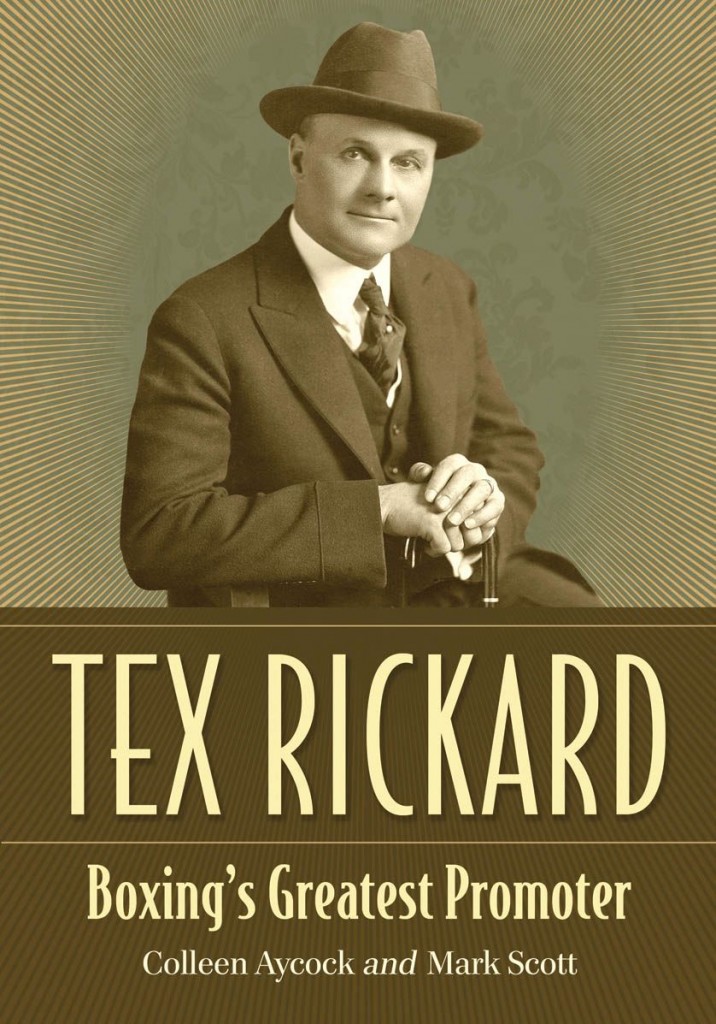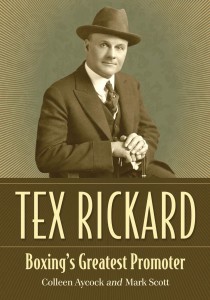Tex Rickard
Boxing’s Greatest Promoter
By Colleen Aycock and Mark Scott
Whether opening saloons, raising cattle, or promoting sporting events, George Lewis “Tex” Rickard (1870-1929) possessed a drive to be the best. After an early career as a cowboy and Texas sheriff, Rickard pioneered the largest ranch in South America, built a series of profitable saloons in the Klondike and Nevada gold rushes, and turned boxing into a million-dollar sport. As “the Father of Madison Square Garden,” he promoted over 200 fights, including some of the most notable of the 20th century: the “Longest Fight,” the “Great White Hope,” fight, and the famous “Long Count” fight. Along the way, he rubbed shoulders with some of history’s most renowned figures, including Teddy Roosevelt, Wyatt Earp, Bat Masterson, John Ringling, Jack Dempsey, and Gene Tunney. This detailed biography chronicles Rickard’s colorful life and his critical role in the evolution of boxing from a minor sport to a modern spectacle.
About the Author
Colleen Aycock‘s father was a professional fighter during the Depression. She lives in Albuquerque, New Mexico and is a contributor to other publications on the history of boxing.
Mark Scott, a novelist and former Golden Gloves boxer, lives in Austin, Texas. He is a contributor to other publications on the history of boxing.
Tex Rickard: Boxing’s Greatest Promoter is for fans interested in the business side of boxing as well as the details of the first Great Fights of the 20th century promoted by Tex Rickard, who virtually invented the idea of boxing as a major business. His knowledge and use of ballyhoo to bring in the crowds and money, was legendary.
Lesser known about Rickard is how he earned the fortitude and endurance for the business. This biography follows Rickard along the famous cattle drives of the Old West and into the Arctic wilderness during the Klondike Gold Rush where made his first fortune as a saloon owner and gained political recognition as Nome’s first nominee for mayor.
Rickard’s first boxing masterpiece was the 1906 fight in Goldfield, Nevada between Joe Gans and Battling Nelson. The chapter on that bout describes from Rickard’s point of view how the deals were made that “put Goldfield on the map.” His second promotional coup was the “Great White Hope” fight between Jack Johnson and Jim Jeffries. Although much has been written on this historic event, the biography explains the machinations of the personalities in and out of the ring. The rancor and reaction to this racially charged event was such that Rickard came close to saying “goodbye” to boxing-setting up a profitable cattle ranch in South America, where Teddy Roosevelt became his friend and confidant.
The politics of WWI convinced the hearty Rickard to rejoin the world of professional pugilism, and his greatest monuments to the sport were the million-dollar Dempsey fights of the Roaring Twenties and the remaking of Madison Square Garden. The Dempsey-Carpentier bout was the first large-scale radio broadcast and the largest international sports event of the era. Contrary to conventional accounts, the French war hero put up a spirited fight against the much bigger Manassa Mauler, Dempsey. The Dempsey-Tunney fights and the Long Count cemented Rickard’s place as the greatest promoter of fistic events. Finally, Rickard left a re-generated Madison Square Garden as the home of boxing for the coming decades.
The book is available now at http://www.mcfarlandpub.com/book-2.php?id=978-0-7864-6591-0

